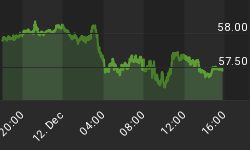Gold Unwinds 2/5ths of Rally as Dollar Rises; 5% Allocation Advised for Investors, 40% "Easily Justified" or Central Banks
THE SPOT PRICE OF GOLD slipped to new 3-week lows Friday lunchtime in London, unwinding two-fifths of the 14% rally from mid-April as the US Dollar rose and oil prices retreated from yesterday's new 8-month highs.
Dropping almost 3% from this week's high of $965 to less than $939 an ounce, the Gold Price fell sharply on news of slower-than-expected Import Price Inflation in the United States.
Gold Trading volumes in Hong Kong had already been reported "tremendously" lower after this week's volatile moves.
US stock futures meantime held inside a tight range as small gains in Asian equities failed to help European shares rise.
"The Dollar is going to put a little bit of pressure on gold," reckons Bernard Sin at Swiss refiners MKS Finance in Geneva, speaking earlier to Bloomberg.
"The Dollar may rebound in the short term. But longer term it's going to continue to weaken."
US Treasury bonds bounced alongside the Dollar on Friday, pushing the yield offered to new buyers of 10-year debt down to 3.81% from nearly 4.00% - a fresh 8-month high - early Thursday.
Ten-year UK gilt yields slipped back below 4.0% Friday morning, as prices rose despite a drop in the value of Sterling on the currency markets.
Sliding more than 3¢ from yesterday's near-2009 highs above $1.66, the drop in Sterling failed to stop the Gold Price in British Pounds dropping below Thursday's 5-month low of £575 per ounce.
The Eurozone single currency meantime dropped back below $1.40, as the Gold Price in Euros slipped to a four-week low of €672.50.
On the consumer side of the gold market, India's Gem & Jewelry Exports Council said Thursday that gold jewelry exports fell nearly 7% year-on-year in May. But 10% of recently sacked staff have since been re-hired following a "revival" in demand.
Overall, total exports of gems and jewelry items fell by one-quarter to $2.93 billion. The diamond industry - which polishes 11 out of every 12 gems processed worldwide - has asked the Indian government for $4bn in emergency credit.
"A lot of the gold market is an Asian phenomenon," said Marcus Grubb of marketing-group the World Gold Council at a conference hosted by ETFS Securities on Thursday.
"There is a strong affinity with gold," Grubb explained, pointing to the Indian wedding season and religious festivals as well as the fear of paper-money inflation across the continent.
"If current trends continue, Asia will account for more than half of world jewelry demand," he added, also citing May's recovery in Indian gold imports and local market demand.
Speaking at last night's AGM of the London Bullion Market Association (LBMA), Jeremy Charles of HSBC - standing down after 3 years as chairman, and with Mitsubishi's Kevin Crisp now appointed to the role - noted the recent launch of new gold-trading exchanges worldwide but particularly in Asia.
"They all reference London Good Delivery as the physical standard underpinning their contracts," he said to LBMA members meeting in the City.
Despite a flood of applications from retail-investment and consumer-item producers wanting to join the Good Delivery List over the past year, the Physical Sub-Committee reported that only one applicant had met the LBMA's exacting standards for 400-ounce wholesale Gold Bars.
Two approved refiners were also moved onto the "Former List", leaving a current total of 58 gold and 65 silver producers.
"Gold is the world's supreme hard asset," said James Steele, senior commodities analyst at HSBC in London, also at the ETFS Securities conference yesterday.
"Bullion trades a 24-hour liquid global market, which not even US equities can claim."
Looking at asset allocation, "Gold Prices may appreciate or depreciate, but holding gold lowers overall portfolio risk," Steele went on, noting that a 5% weighting is often advised.
"People use gold to play currencies, politics, asset allocation," added Marcus Grubb, highlighting WGC research which says central banks such as the People's Bank of China - now the world's fifth largest holder but with less than 2% of its currency reserves in gold - can "easily justify 40-50% weightings in gold."
Forbes magazine today reports that mining-giant Rio Tinto's decision to form a joint-venture with fellow Australian producers BHP Billiton - rather than China's state-owned Chinalco - has sparked trade sanctions against both firms.
"There is an old Chinese saying," says the Xinhua news agency. "A gentlemen's agreement is beyond the letter. Honesty is the blood of business behavior."
On the economic front meantime, Japan today reported sharply higher industrial for April from March, but industrial production in the 16-member Eurozone slumped yet again, taking the year-on-year collapse to 21.6%.
US household wealth was shown by the Federal Reserve's Flow of Funds report to have fallen by $1.3 trillion during the first 3 months of this year, adding to the fastest slump since records began nearly six decades ago.
And in South Africa - formerly the world's No.1 gold producer but suffering a 13% drop in volumes during April from the same month last year - the National Union of Mineworkers (NUM) today warned that a strike is "imminent" after negotiations over the 7% wage rise offered by Gold Mining bosses reached deadlock.
















